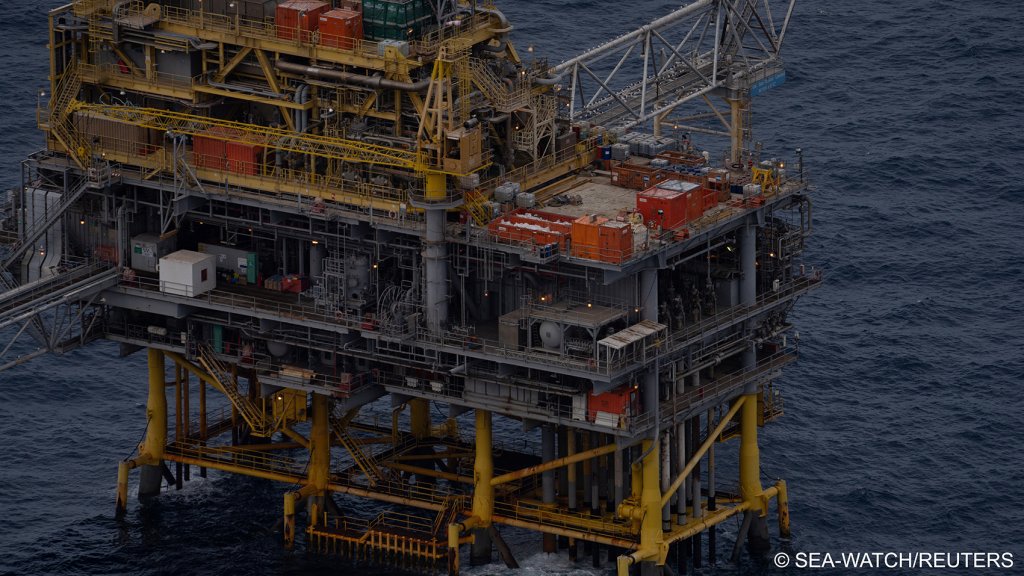Sea-Watch rescued 32 migrants from a gas platform in the middle of the Mediterranean Sea and brought them to the Italian island of Lampedusa on Tuesday. They had been stranded on the rig for days.
An operation to rescue 32 migrants, including two children, started on Tuesday afternoon (March 4), after the group had been stranded on a gas rig about 75 miles off the Tunisian coast for at least three days.
Sea-Watch, an ocean patrol and humanitarian group, confirmed to InfoMigrants that their fast rescue vessel Aurora had approached the gas platform and had started to embark the people on Tuesday.
"We’d like to stress that the gas platform is located in international waters, on the border between the Tunisian and Maltese search and rescue zones (SAR), which makes the Maltesian authorities responsible for rescuing the people--a responsibility they simply ignored in the last days," a spokesperson for Sea-Watch told InfoMigrants.
Sea-Watch, a maritime patrol charity, first spotted an empty rubber dinghy floating near the gas platform during an aerial reconnaissance mission on Saturday.
On X (formerly Twitter), Sea-Watch on Monday (March 3) said they had returned to the platform to monitor the situation. They called on European authorities to rescue the group, claiming that the passengers were "at imminent risk of an illegal pullback, which would condemn them to further persecution and suffering in Tunisia”.
AlarmPhone, which operates a maritime helpline, reported that they had been in contact with the people stranded, and said that people were bundled in blankets on the platform deck, trying to shelter from the wind and waves. In a post on X (formerly Twitter), AlarmPhone said that the migrants had had nothing to eat for days. One person died and the others were in “bad health condition”, the organization said on X (formerly Twitter).
The migrants were reported to have fled from Libya.
On Wednesday, Sea Watch confirmed to InfoMigrants that the Italian authorities had assigned Lampedusa as a safe port after the rescue. The 32 passengers were disembarked there. On X, Sea Watch also posted an update on the status of the rescue operations.
Controversial EU migration deal with Tunisia
Italy and the European Union, keen to curb irregular immigration, have signed agreements with Tunisia and Libya to ensure that local authorities intercept and take back sea migrants, despite criticism from human rights groups.

The platform on which the migrants were spotted is the Miskar gas platform. About 120 kilometers offshore, the Miskar gas platform is reported to contain the largest accumulation of gas ever discovered in Tunisia.
In an email, oil giant Shell informed InfoMigrants that after a license expiry in June 2022, Shell handed Miskar back to the Tunisian government. According to Shell, the Miskar gas platform is currently operated by Amilcar Petroleum Operations, Tunisia’s largest upstream producer of gas.
Tunisia lies bordered by Algeria and Libya on the southwest and southeast and facing the Mediterranean Sea, making it a popular take-off point for people who want to enter Europe by sea.
The North African country has been facing heavy criticism for its reported anti-migrant measures. Last June, Tunisia suspended asylum application procedures managed by the United Nations Refugee Agency, leaving hundreds of migrants stranded without aid and in an ambiguous legal limbo. Migrants and human rights groups have also accused Tunisian authorities of dropping off migrants in the middle of the desert near the Algerian border, as well as the Libyan border, and abandoning them there.
Read AlsoTunisia under harsh criticism for anti-migrant measures
Refugees and migrants on oil and gas platforms: Not the first case
This is not the first time that people have sought refuge on offshore oil or gas platforms. In 2022, about 70 migrants seeking to cross the Mediterranean were rescued from an oil platform and then turned over to the Tunisian authorities. The same year, 59 people from Syria, Egypt, Sudan, and Eritrea—including 10 minors—were reported to have been rescued from an oil platform by the charity Open Arms.
Because of its remote location and infrastructure structure comprised of heavy machinery and flammable materials, conducting a rescue operation on oil rigs or gas platforms can be complex and risky. According to the International Labour Organization (ILO), offshore oil rigs are subject to extreme weather conditions such as high winds and rough seas. Those who find themselves stranded on an oil rig are at risk of exposure to hypothermia and dehydration.
Update: We updated this article on March 5, 2025 to include the latest information about the rescue operations at sea.
